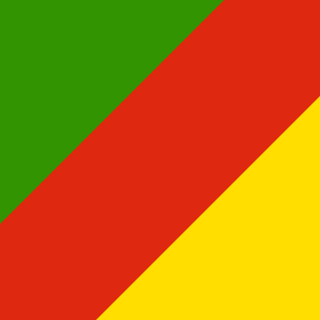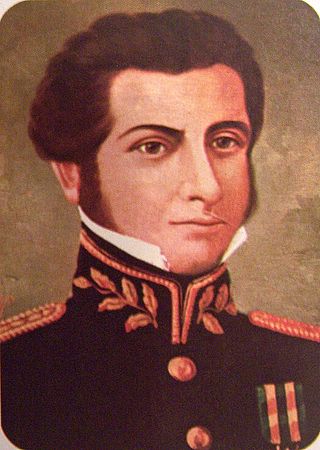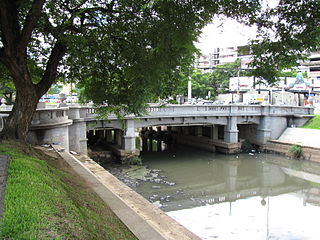External links
30°05′14″S51°14′33″W / 30.087161°S 51.242445°W
| Location | Porto Alegre, Brazil, Av. Diario de Noticias s. n. |
|---|---|
| Date opened | 1959 |
| Race type | Thoroughbred - Flat racing |
| Notable races | Grande Premio Bento Goncalves Brz- G1 |
Hipodromo do Cristal (Cristal Racecourse) is the most important center of horse racing in the state of Rio Grande do Sul, Brazil. It is located at Porto Alegre. It was designed by renowned Uruguayan architect Roman Fresnedo Siri. It is regarded as a remarkable example of modern architecture in South America.
Horse races are taking place on Thursday. A major event is the Grande Premio Bento Goncalves (in November).
The dates can be changed each year
30°05′14″S51°14′33″W / 30.087161°S 51.242445°W

The Ragamuffin War or Ragamuffin Revolution was a Republican uprising that began in southern Brazil, in the province of Rio Grande do Sul in 1835. The rebels were led by generals Bento Gonçalves da Silva and Antônio de Sousa Neto with the support of the Italian fighter Giuseppe Garibaldi. The war ended with an agreement between the two sides known as Green Poncho Treaty in 1845.

Bento Gonçalves is a municipality located in the state of Rio Grande do Sul, Brazil. Created in 1875, it is one of the centers of the Italian immigration in Brazil. It is also known as the 'wine capital of Brazil' due to its vineyards and wine production. In 2020, its estimated population was 121,803 inhabitants.

The Riograndense Republic, often called the Piratini Republic, was a de facto state that seceded from the Empire of Brazil and roughly coincided with the present state of Rio Grande do Sul. It was proclaimed on 11 September 1836 by general Antônio de Sousa Neto as a direct consequence of the victory obtained by gaúcho oligarchic forces at the Battle of Seival (1836) during the Ragamuffin War (1835–1845). It had a constitution adopted in 1843 and was recognised only by the United Kingdom, France, and Uruguay.

Rio Grande is a municipality (município) and one of the oldest cities in the Brazilian state of Rio Grande do Sul. It was the state capital from 1835 to 1845. It is the most important port city in the state and has one of the most important maritime ports in Brazil.

Serras de Sudeste is a dissected plateau, also named Planalto Dissecado de Sudeste or Escudo Sul-Rio-Grandense, located in the southeastern portion of Rio Grande do Sul state in southernmost Brazil, near Uruguay.

Manuel Marques de Sousa, Count of Porto Alegre, nicknamed "the Gloved Centaur", was an army officer, politician and abolitionist of the Empire of Brazil. Born into a wealthy family of military background, Manuel Marques de Sousa joined the Portuguese Army in Brazil in 1817 when he was little more than a child. His military initiation occurred in the conquest of the Banda Oriental, which was annexed and became the southernmost Brazilian province of Cisplatina in 1821. For most of the 1820s, he was embroiled in the Brazilian effort to keep Cisplatina as part of its territory: first during the struggle for Brazilian independence and then in the Cisplatine War. It would ultimately prove a futile attempt, as Cisplatina successfully separated from Brazil to become the independent nation of Uruguay in 1828.

Cidade Baixa is a neighborhood of the city of Porto Alegre, the state capital of Rio Grande do Sul in Brazil. The neighborhood was created by the law number 2022 of December 7, 1959.

Antônio Vicente da Fontoura was a Brazilian statesman. He was one of the main political leaders of the Riograndense Republic during the Ragamuffin War (1835–45) and the chief-negotiator of the peace treaty with the Empire of Brazil.
Agronomia is a neighbourhood (bairro) in the city of Porto Alegre, the state capital of Rio Grande do Sul, Brazil. It was created by Law 4166 from September 21, 1976, but had its limits modified in 1990 and 1997.
The Grande Prêmio Bento Gonçalves is a Group II left-handed flat race for three-year-olds and up in Brazil. It is the most important race in the state of Estado do Rio Grande do Sul.

The Federal Institute of Rio Grande do Sul, or in full: Federal Institute of Education, Science and Technology of Rio Grande do Sul is an institution that offers high and professional educations by having a pluricurricular form. It is an multicampi institution, especialized in offering professional and technological education in different areas of knowledge.
The following is a timeline of the history of the city of Porto Alegre, in the state of Rio Grande do Sul, Brazil.
The 2021 Campeonato da Primeira Divisão de Futebol Profissional da FGF - Divisão Especial - Série A1, better known as the 2021 Campeonato Gaúcho, was the 101st season of Rio Grande do Sul's top flight football league. The competition was played from 27 February to 23 May 2021. 12 clubs contested in the Campeonato Gaúcho. Grêmio were the three-time defending champion and successfully defended their title.
The 2022 Campeonato da Primeira Divisão de Futebol Profissional da FGF - Divisão Especial - Série A1, better known as the 2022 Campeonato Gaúcho, was the 102nd season of Rio Grande do Sul's top flight football league. The competition was played from 26 January to 2 April 2022. 12 clubs contested in the Campeonato Gaúcho. Grêmio were the four-time defending champion.

The capture of Porto Alegre was one of the starting points of the Ragamuffin War. It took place on 20 September 1835, the day after the Battle of Azenha Bridge. Its date has been celebrated as a state holiday in Rio Grande do Sul since 1995 and also marks the end of Farroupilha Week, between the 14th and 20th of September.

João Manuel de Lima e Silva was a Brazilian military officer and revolutionary leader, being the first general of the Riograndense Republic.

The Historic and Geographic Institute of Rio Grande do Sul, or IHGRGS, is a private non-profit institution based in Porto Alegre, and founded on August 5, 1920. Its main goal is to promote and spread the production of knowledge, especially focused on the state of Rio Grande do Sul. It went through several locations until it settled in the current building in Porto Alegre, inaugurated on March 25, 1972, which includes a research room, the Tomás Carlos Duarte Library, an archive room, the general library, the map library, and an auditorium with capacity for 150 people.

Antônio Rodrigues Fernandes Braga was a Brazilian judge, county ombudsman, and politician. He was a general deputy to the General Assembly and the provincial governor of the province of Rio Grande do Sul from 2 May 1834 to 21 September 1835. He was the provincial governor at the outbreak of the Ragamuffin War in Rio Grande do Sul. He also served as a senator from Rio Grande do Sul and as a justice to the Supreme Court of Justice, nominated to the latter by imperial letter on 27 April 1870 and serving from 1870 to his death in 1875.
Marciano José Pereira Ribeiro was a Brazilian doctor and politician. He was the president of Rio Grande do Sul in two terms in 1835 and 1836.

The Azenha Bridge is located in the Azenha neighborhood, in the Brazilian city of Porto Alegre, in the state of Rio Grande do Sul. It is situated on the corner of Azenha and Ipiranga avenues.